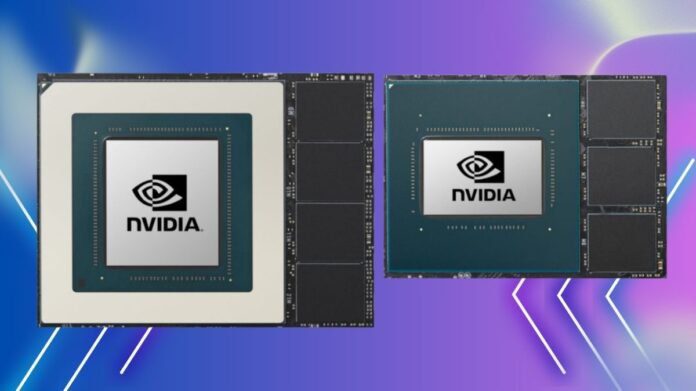Nvidia AD103
Nvidia has another RTX 4070 variant brewing this one uses a down-binned AD103 GPU from the RTX 4080 Super.
AD103 vs AD104
The Nvidia GeForce RTX 4070 ranks as one of the best graphics cards for gamers. Not surprisingly, TechPowerUp seemingly has confirmation that Nvidia released a new variant of the 4070 with harvested AD103 chips, which are normally used in the faster RTX 40-series models like the RTX 4070 Ti Super, RTX 4080 (now discontinued), and RTX 4080 Super. This is strictly business as usual, making use of every possible piece of silicon by turning off non-functional portions of the chip, and we previously reported on upcoming down-binned 40-series GPUs last month.
The RTX 4070 normally utilizes the smaller AD104 die. The silicon, a product of TSMC’s 4N Finfet manufacturing process, measures 294 mm² in die size and houses up to 35.8 billion transistors. Although 60 SMs (7,680 CUDA cores) are inside the AD104 silicon, the GeForce RTX 4070 only has 46 SMs (5,888 CUDA cores) enabled. The RTX 4070 Ti (also discontinued) used the fully enabled AD104 GPU, while the RTX 4070 Super has 56 SMs (Streaming Multiprocessors) enabled.
RTX 4080 AD103
AD103 has a die size of 379 mm² and 45.9 billion transistors, meaning it’s 29% larger and thus costs 29% more to manufacture (give or take). The full chip has 80 SMs (10,240 CUDA cores), which is what Nvidia puts in the RTX 4080 Super. AD103 also supports four 64-bit memory channels (256-bit total), which are used for the 4070 Ti Super and above, while the 4070 only needs three channels (192-bit total).
There shouldn’t be any noteworthy benefit to end users in getting an RTX 4070 based on a harvested AD103 chip. Rather, it’s Nvidia likely clearing out “faulty” chips that simply couldn’t meet the required specs for the higher-end Ada Lovelace models. This follows the usual pattern with prior GPU architectures, and Nvidia has likely been collecting AD103 chips that failed to meet the requirements for at least RTX 4070 Ti Super for over a year. Now, it has enough that it’s ready to sell them off as a late-cycle update to a lower tier product and with less than 60% of the SMs enabled, this should allow the use of nearly any remaining AD103 dies.
According to Tom’s Hardware, one TechPowerUp reader reported to the news outlet that the RTX 4070 (AD103) is already on the market. At least one known MSI model, the GeForce RTX 4070 Ventus 3X E 12G OC, is already using the AD103 die. TechPowerUp’s investigation shows that the new model is already supported in the latest Nvidia 552.22 drivers.
While the AD103 chips is physically larger than AD104, the PCB design, pin map, and package are apparently the same, allowing Nvidia and its board partners to swap between the GPUs as needed. Again, this was a premeditated design decision as Nvidia knew before the first Ada Lovelace GPUs rolled off the production line that it would inevitably have some chips that would require down-binning.
AD103 Nvidia
The Nvidia Blackwell RTX 50-series graphics cards will likely hit the retail market before the end of this year, starting with the highest performance models. Nvidia will want to clear out any existing Ada Lovelace silicon as quickly as possible between now and Blackwell’s launch, and recycling dies from one SKU to another represents a good way to do that. It wouldn’t be surprising to see Nvidia also release a variant of the RTX 4070 Super using AD103 all it would need is chips with at least 56 functional SMs.
Again, this silicon swap benefits Nvidia and its partners more than the consumer. The company is unlikely to lower the RTX 4070 (AD103) pricing or anything along those lines. Consumers will still receive an RTX 4070 with the same level of expected performance though GPU temperatures could be slightly lower thanks to all the “dead silicon” in the chips.
Minor elements of the new RTX 4070 model with a down-binned AD103 GPU are carried over from its higher-end cousin, while there may be minor modifications:
RTX 4070 AD103
- Greater Die: Compared to the AD104 GPU that was originally included in the RTX 4070, the AD103 GPU has a larger die size. More transistors and possibly more processing power in theory may result from this.
- Similar specifications: It most likely has a memory interface width of about 192 bits and 12GB of GDDR6X memory.
- Potential Core Disparity: The AD103 model may include more Streaming Multiprocessors (SMs) than the original RTX 4070 (maybe 60, similar to the RTX 4070 Ti), however some SMs may be disabled to bring the performance closer to that of the original RTX 4070.
- Standard capabilities: You may anticipate capabilities like hardware ray tracing and variable-rate shading along with support for DirectX 12 Ultimate.
- Important Point: Because several cores have been disabled, this variation should perform similarly to the original RTX 4070. The primary distinction is in the GPU die underneath and maybe in the number of cores.

